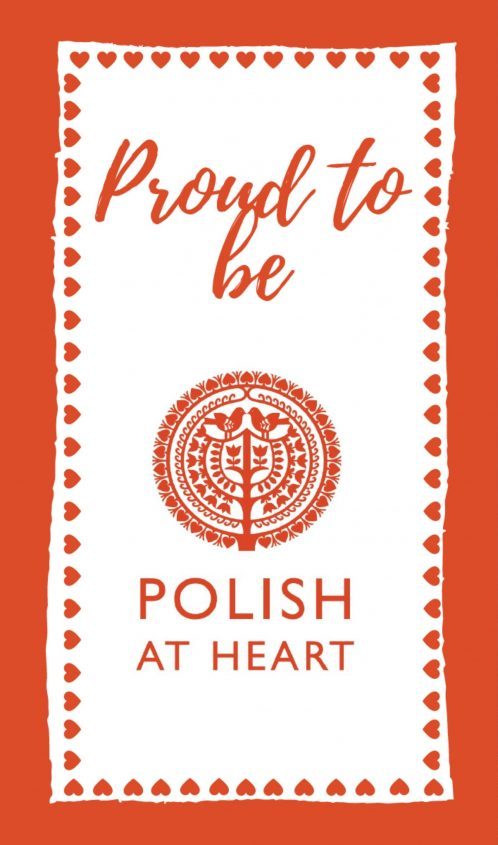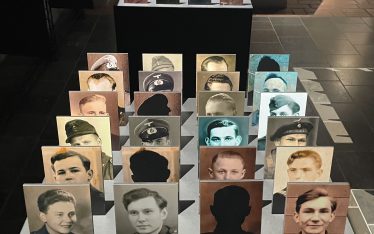Whilst the massacre of 22,000 Polish officers in 1940 at Katyń is commemorated every year in April, it was just the beginning of further horror – deportation and exile for their families. It takes us into May when we remember the heroic battle of Monte Cassino. Members of the surviving families joined the II Polish Corps, some died in battle, for others the trauma ended not with hope but exile for life.
The numbers involved in the Katyń atrocity make it difficult to comprehend without relating it to the personal. Bogusław Piesiewicz, suffered a double tragedy as a child, yet he survived and became an underage soldier of the II Polish Corps in Italy. He settled in Leeds and I knew him through my parents – a very literate, passionate man who strove for justice for the Katyń victims until his dying day. These are his own words, abridged and translated into English*.
My father Staś
“My father, Stanisław Piesiewicz, was born in Maciejowice [south east of Warsaw] in September 1892. In 1914 he was drafted into the Russian army and took part in the Russian-German war. Together with several other Poles, they “disappeared” and after many adventures, Father found himself in Tashkent. After returning to [a free] Poland, my father settled in a good area of Zdołbunów town in Wołyń (near Równe).
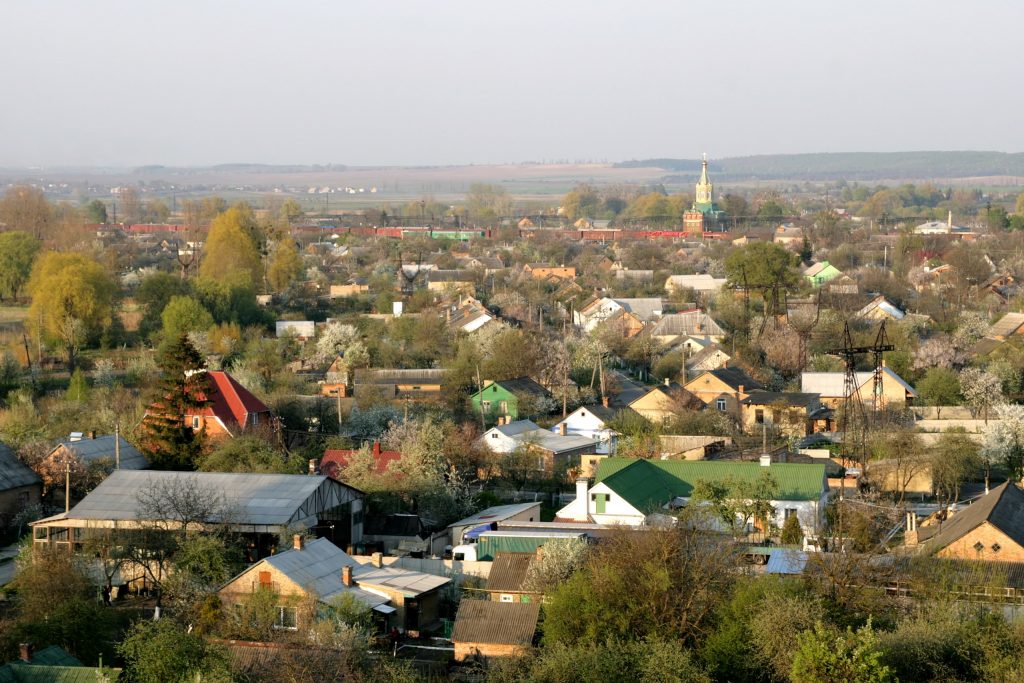
As an employee of PKP (Polish railways), my father earned good money in the Kresy (borderlands) region. He would also work with other railwaymen across the Soviet border. Every few days, a Soviet passenger train came to the station in Zdołbunów: often a powerful “Ordzhonikidze” type locomotive with a howling, piercing whistle and a set of 5 or 6 impressive carriages (all for show). Sometimes they converted the carriages to the normal European gauge or the passengers moved to Polish ‘Pullmans’. A few times Father took me with him. I would stand at a distance, as Father greeted the Soviet train manager. They would talk for quite some time, Father would sign some documents (there were several policemen and undercover officers around), and then we would drive home.
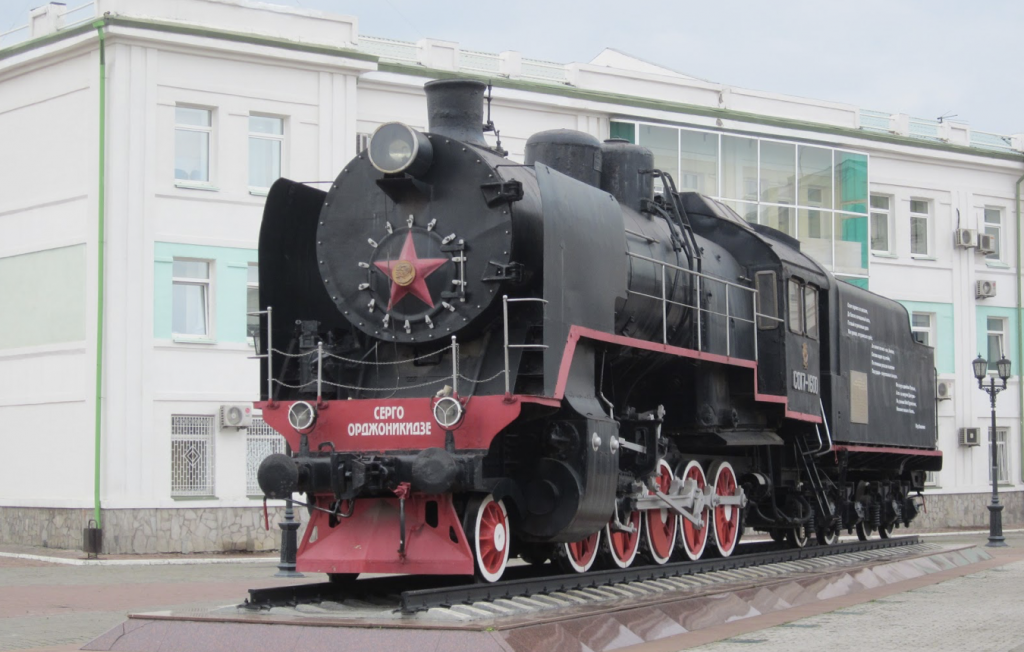
The day war began
The Soviets entered Poland on September 17, 1939. By afternoon they were already in Zdołbunów. We listened on an old radio transmitter to the then commissar of foreign affairs Vyacheslav Molotov-vel-Skrjabin – “It was enough to strongly attack the German army and invade with our Red Army for nothing to be left of the Versailles Treaty.” My father cried and said – “Poland is no longer”. In the evening of that day, I saw through the crack of the kitchen door as Father and Mother spread a lot of “Mikołajewki” on the table – gold five and ten rouble coins they had brought back from Tashkent.
After dividing the gold rubles, I saw Father at night carrying something quite long, wrapped in oilcloth which he buried in our large garden. Much later I learned from Mother that it was Father’s service revolver, because my father had worked with the counterintelligence section and had contacts with certain Soviet citizens. On the next day, September 18th, my father went by bicycle to the station to find out whether he should continue working. We waited almost until midnight, but for nothing. My father did not come back. A railwayman friend lightly knocked on the window and my mother let him. He announced to us that Staś (my Father) had been arrested by the NKVD along with several other railwaymen and had been taken to the prison in so called “Górki” in Równe.
Visits to Równe
Railwaymen friends often took me to Równe with food packages for my father. The NKVD accepted them, but they never said if my Father was there. Somewhere around Christmas 1939, Dr. Sobański the railwaymen’s doctor was released from the prison, Father’s friend and partner in the card game “preferans” (like whist). He turned up at our house secretly at night. I remember when he said: “Kaziu, Staszek was beaten so badly he tried to take his life.” After a few weeks, they arrested Dr. Sobański again and temporarily left him in Zdołbunów under the control of the so-called “Magistrate”. That night, the doctor hanged himself in the toilet because he knew what was going to happen to him.
The Bolshevik ramp
On April 4, 1940, news spread in Zdołbunów that on the so-called “Bolshevik ramp”, the area where the wide Soviet train tracks met the local [Polish] ones, there was a freight train with prisoners from Równe and other cities. I picked up Father’s bike from the railwayman’s cabin and drove to this ramp.
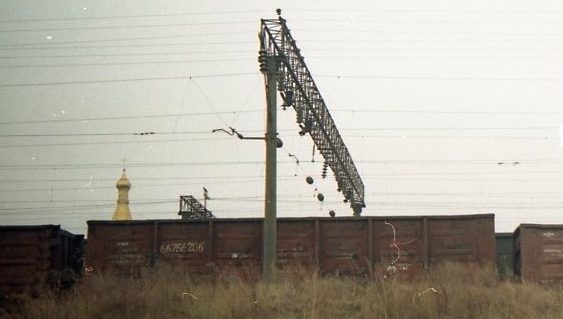
There were about ten cattle wagons there. The area was busy with NKVD men and militia, but prisoners looked out of the window bars. I remember there were women in one carriage – as it turned out, they were harcerki [girl scouts] singing the song “Rota” by Konopnicka. The Soviet guards were pounding the wagon with rage with the butts of their rifles, however, ignoring the frequent kicks from NKVD men and militiamen, I kept shouting my father’s name towards the barred windows. In the end, someone shouted back, “son go to the last wagon, your father is there.” I ran in that direction and finally I stood a dozen steps away, where the guard was giving out “kipiatok” (hot water) and some scraps. One of the NKVD men shouted at me to leave because “we will shut you up as well”. Suddenly, from one of the open doors, a prisoner shouted loudly in Russian: “You scum, will you not let a son say goodbye to his father for the last time?” Evidently something human spoke to the Bolshevik’s soul because he took my arm and said, “Come here boy, talk to your father, hurry, hurry.”
Never to see him again
Second in the line, with a mess tin, stood my Father. In a desperate voice he said, “My son, we will never see each other again, they are taking us to the main interrogation place – I think – to Charków. I am very cold (he was without a coat), try and bring me my sheepskin, tomorrow morning: we will be here until 9 o’clock. Do not say anything to your mother until tomorrow.”
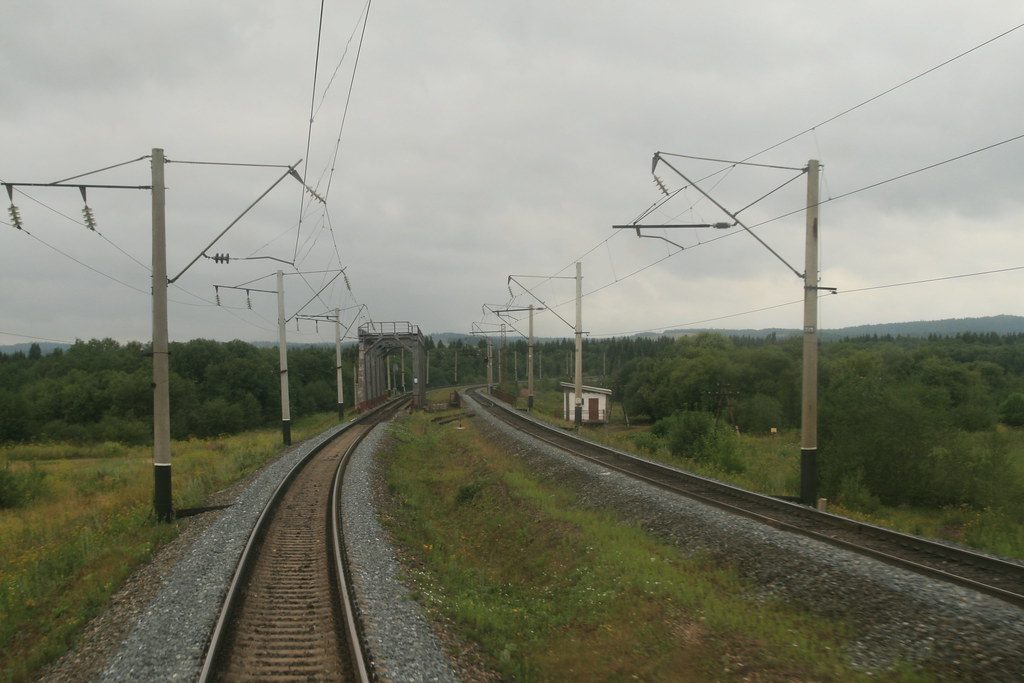
Tearfully I went home. In the morning, I got on the bike (on the frame because I could not reach the pedals from the saddle) with the sheepskin coat. I threw the bike between the rails and looked terrified as the train began to slowly move away – more than an hour earlier than Father had told me to come. I ran after the train shouting: “Daddy, Daddy”, weeping fervent tears, as the train slowly moved away, further away … I saw from the last wagon, someone waving a bright rag through the barred window – it had to be my father, he had managed to see his son running after the train, through the gaps. Heartbroken, I returned home.
They came for Mother and me
When they came for Mother and me on April 13 1940, the oldest NKVD man read the official announcement: “Kazimiera Pietrowna Piesiewicz nie biespakojties, jedietie k’waszemu mużu, on rabotajet po swojej specjalnosti na Pietropawłowskiej żieleznej dorogie.” (Kazimiera Pietrowna Piesiewicz, do not worry, you are going to join your husband, he’s working in his speciality on the Pietropawłowsk railway). They lied shamelessly so as not to panic people and provoke shouts of despair.
The road to Monte Cassino
After that, for me there was northern Kazakhstan, the so-called “amnesty”, and joining the Junacy (cadets), where I spent a year. As a radio-telegraphist I was then assigned to the 9th company of Signals of the 2nd Armoured Brigade of General Bronisław Rakowski. As probably the youngest soldier of the II- Corps of Gen. W. Anders, I took part (though not directly) in the battle of Monte Cassino. I was 16 years and several months old.
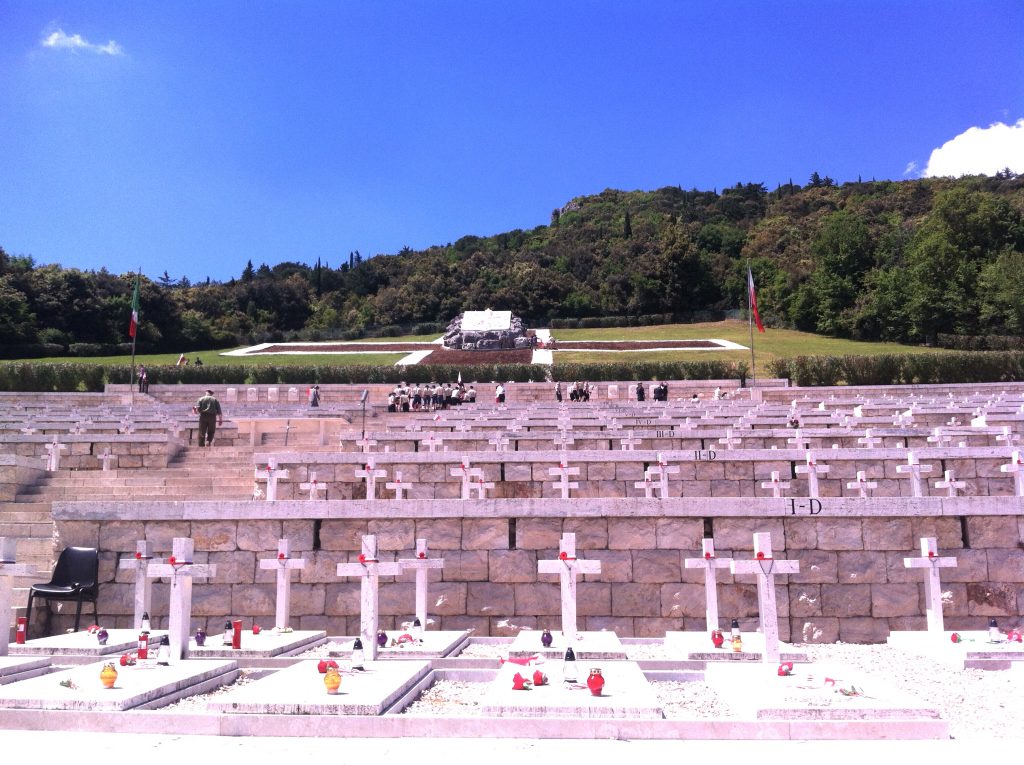
The quest for truth
From time to time I wrote to many places, including the Red Cross in England, to the late Professor Zdzisław Stahl [Polish political journalist in exile], wanting to find out where my father had died. I also corresponded with the [Polish] prosecutor Aleksander Herzog, then (1994-1996) advisor to the Polish Minister of Justice. At his request, the Dziennik Polski published his very long letter to me on April 26, 1995, including his appeal to send him the names of those arrested in Belarus. He invited me to visit him which I did in June 1995. I found out that my father Stanisław appears on the so-called “Ukrainian List”, as murdered in April 1940.

According to the NKVD list, 3435 Polish citizens were shot in Ukraine, about 7,500 executed in Belarus and, above all, 14,700 Polish prisoners of war, were all executed [at Katyń and surrounding areas] on the basis of the same order.”
Memorials and recognition
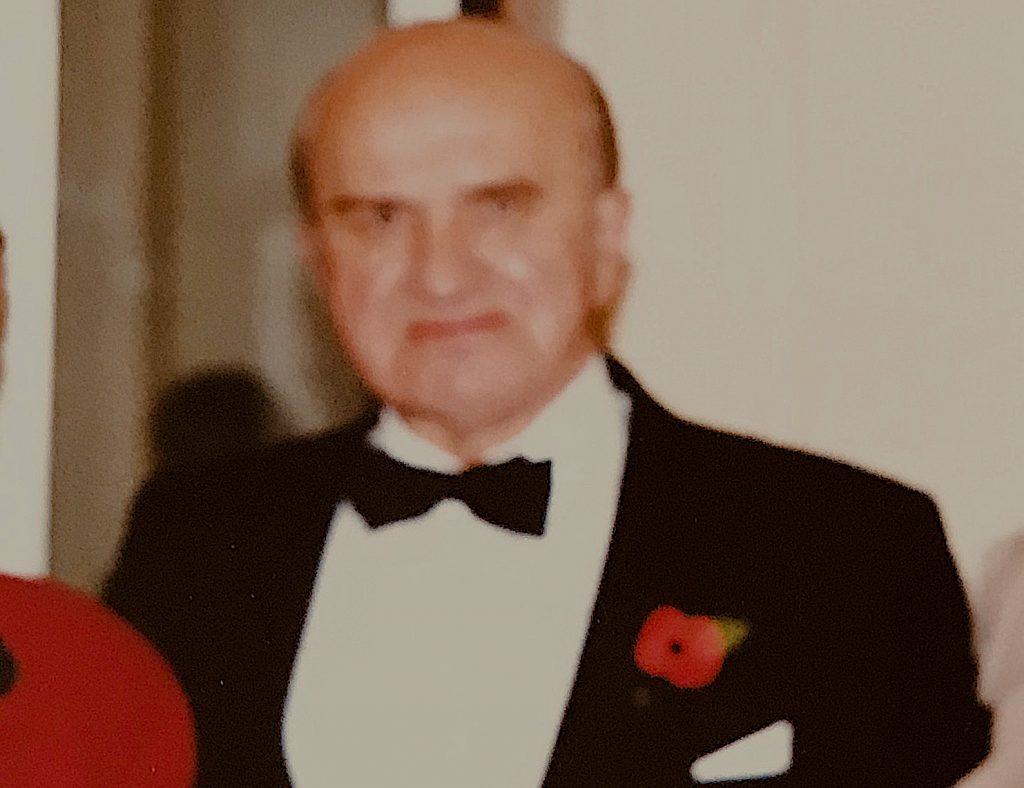
This is the story of Bogusław Piesiewicz’s early life. At the same time as the officers were being killed in 1940, Bogusław and thousands of other children, wives and parents of these officers were arrested in the second mass deportation and taken to the Soviet Union for forced labour, mainly to Kazakhstan. In 1942 he was evacuated to Iran with his mother and siblings. On April 13, 1943, the Germans announced that they had discovered the mass graves of Polish officers in the Katyń forest near Smolensk, in western Russia.
This war crime was not officially acknowledged by the Russians until 2010 (having released some documents in the 1990s). The UK and USA had evidence of the massacre since the first discovery, but suppressed it until the late 1990s, when archived reports were published, recognising the concern of the Polish people that it had never been acknowledged sufficiently internationally (UK FCO 1996). Neither the massacre nor the deportations have never been pursued as a war crime by the UK government.

The Katyń memorial at Gunnersbury in London, as featured above, was only dedicated in 1976 with opposition from the Soviet government and constant delays from the British government. It is not in central London.

In 1990 a memorial plaque was erected on the wall of Leeds Polish Church and Bogusław arranged for an urn of soil from Katyń to be set into the wall below. Many other memorials have since been erected around the world thanks to people like Bogusław Piesiewicz. Honoured by the Polish President for his work in 2004, he continued to press the authorities for answers, fervently righting slurs on his country through the media and promoting the truths known for so long, yet not acknowledged.
.
*Translated from an article in Panorama magazine, published in Nottingham by the recently deceased Maria Polkowska
If you would like to read more on this subject:
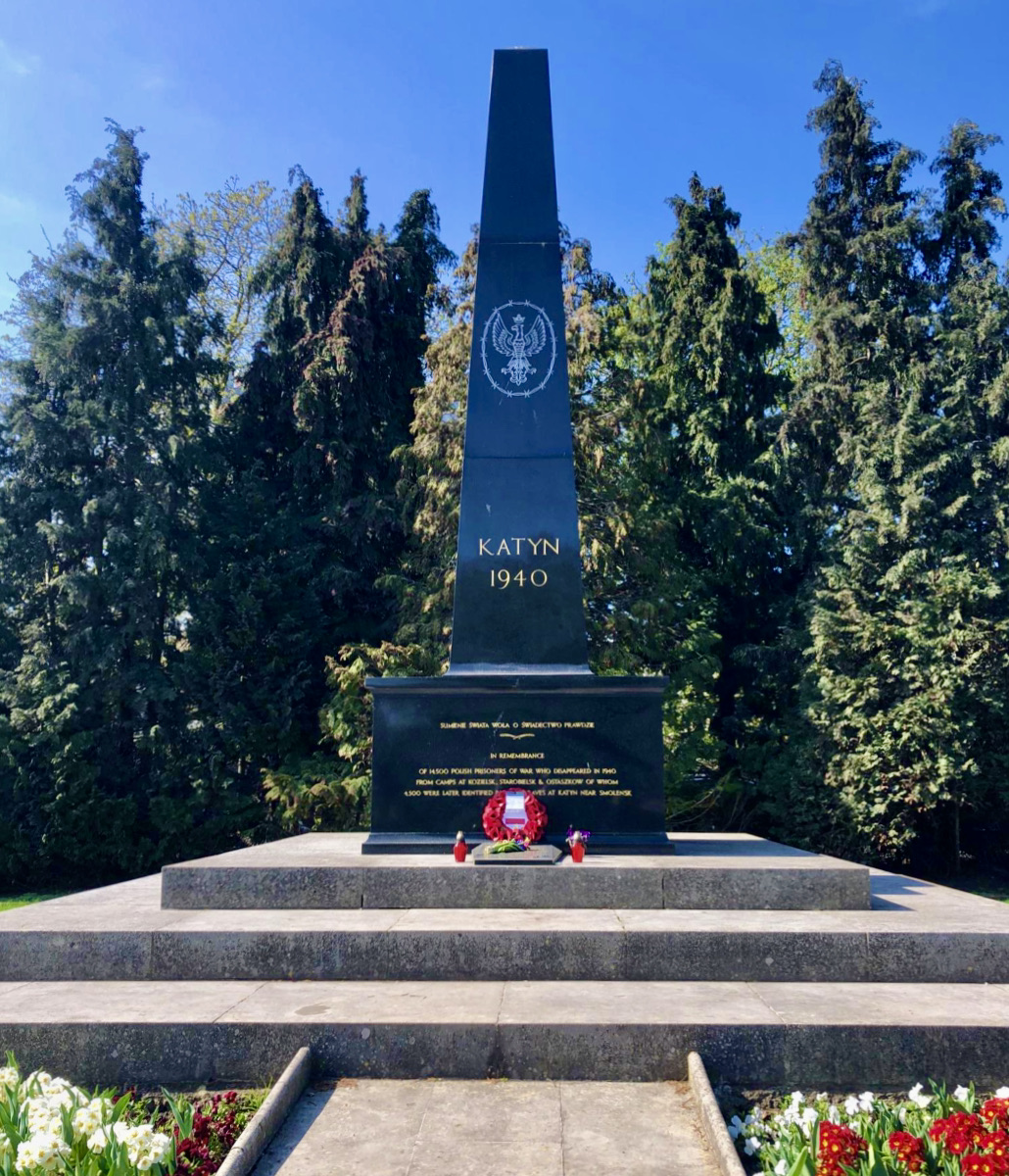

 1.Tracing Family History pre-WW2
1.Tracing Family History pre-WW2 2. Tracing Family History WW2
2. Tracing Family History WW2